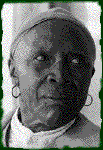
PREFACE
What Is Remembering Slavery?
Many years after the Civil War had ended, those survivors who had once been slaves were interviewed by a variety of scholars and researchers. (In the 1920s, scholars, particularly from African American colleges, began interviewing former slaves, a project taken up again in the 1930s by the Federal Writers' Project. Another group of scholars inspired by the FWP began voice-recording their interviews with former slaves.) Those transcribed and taped interviews, totaling tens of thousands of pages, are collected in the Library of Congress, and in state archives and university manuscript collections. The book and tapes (to be broadcasted by PRI) that comprise Remembering Slavery compile excerpts from many of these interviews, providing a unique opportunity for readers and listeners everywhere to discover these vital historical resources and their singular first-hand perspective of slavery.The tapes in Remembering Slavery include interviews with former slaves, as well as dramatic readings based on those interviews that were transcribed on paper; the book portion expands on these recorded interviews with many more additional transcribed narratives, organized into five sections each centering on a major theme. Both the book and tapes/broadcast enable us to see how former slaves describe - in their own words - what it was like to be a slave, and to be free.
What Is in This Learning Guide? Diving into the narratives and interviews in Remembering Slavery without any kind of guidance or context can be rather daunting; the book and tapes cover so much rich material, it can be difficult to focus on and respond to everything, and without some kind of focus or direction, you risk missing out on much of what these interviews have to tell us. This Learning Guide is designed to enhance your experience of reading and/or listening to the interviews, making it a more thought-provoking, informative, and personally enriching activity.
The Learning Guide is divided into a series of listening/reading sessions, based on the five chapters of the book and the two tape recordings/broadcasts. For each one, you'll find a variety of questions and activities to try before, during, and after you read and listen to a portion of the interviews. These questions and activities will help you focus on those elements of the narratives that are particularly significant, and identify major themes and issues that continue to interest, trouble, and intrigue historians and history buffs. They'll also get you thinking more about the implication and significance of these materials, and help you find ways to connect with them more personally.
The Learning Guide can be used by anyone who wants to maximize the experience of hearing and reading these interviews with former slaves. If you are listening and reading on your own, the Learning Guide may serve as a fellow respondent, prodding you to focus on and express your thoughts and feelings. The activities and questions included here are also ideal materials for generating discussions among those reading and listening in groups.
For Teachers: Using Remembering Slavery
and the Learning Guide in the ClassroomThis Learning Guide is also designed to be used as a teaching tool, to help teachers of students of all ages utilize the book and tapes/broadcasts in the classroom.
Each listening and reading session included in the Learning Guide can be used as a lesson plan in the classroom. Throughout the Learning Guide, sections entitled ≥For Teachers≤ detail how to tailor these sessions to the classroom. In the Learning Guide, you'll find a wide range of topics, questions, and activities; you can easily choose those you find most applicable to your own class and students and create lesson plans based on them, or use the Learning Guide as a model for developing your own lessons. The Resources section at the end of the Learning Guide is filled with a variety of source materials you can introduce alongside Remembering Slavery to expand on the issues raised here and to continue exploring these topics with your students.
Although Remembering Slavery most obviously lends itself to the study of the institution of slavery and American history during the Civil War and Reconstruction, there are many subjects for which it can provide interesting material. The book and tapes/broadcasts might, for example, also be appropriate tools for the study of African American history; culture and folklore; African American literature; biography and autobiography; economics; sociology; social history; anthropology; research methodologies; and genealogy.
Previous Return Next